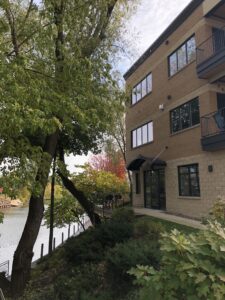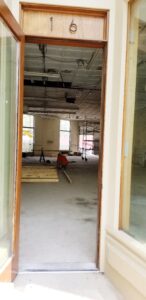We at the Civic Labs have been talking for some time now about how Michigan needs more housing. Or rather, that we have an abundance of single family housing choices across the broad geographies of our state, but lack the kind of desired housing units of the missing middle variety in walkable neighborhoods at a price range attainable for working households. There’s a mis-match in supply and demand.
When was the last time you logged into Zillow to look at the housing market, and when not seeing exactly what you want, wondered if it might be cheaper to build?
If you are like many Michiganders, it was probably yesterday. That option likely faded once you ran the numbers. New construction is expensive in not only the case of private housing, but also public and corporate housing sectors. It is even more expensive when the costs for retail and manufacturing facilities are taken into consideration. The trick is understanding exactly what the costs are and the impacts that are contributing to this high cost environment in Michigan, then addressing them head on.

Missing Middle-type housing example in Traverse City
Simple, right? You’d think so. It’s not a new problem to address. But land and materials costs, labor supply, and the permitting and site plan approval process add significantly to the cost of construction of higher density housing units. These three core variables create barriers to success for the kinds of projects that are ostensibly needed by Michigan residents.
In November, Richard Murphy wrote about Michigan’s lack of preparation to handle growth should it come our way. Many of the same reasons that Michigan is ill equipped to handle growth are the very same reasons that the costs of new construction are so high in this state compared to others. As Murphy noted “Michigan’s classic strategy over the past decades has been to expand outwards-whether we’re growing on net or not. The state has expanded its developed land area by 50% in 30 years, a better (er, worse) than 5:1 ratio of infrastructure expansion to population growth. As we’ve found out, adding infrastructure so much faster than we’ve added new people to pay for it means that each of us has to pay more.” Unsupported and often unnecessary outward expansion directly impacts the cost of doing business in Michigan. Growing scarcity of land leads to increased costs for buildable lots which in turn increases the baseline cost to build new.
The common response to outward expansion is, “but growth is good, right?” Not necessarily.
We need to make sure that we are growing smarter, not just growing because we can.
This is where land use policy; green space and farm land conservancies; public transit; and population density enter the conversation. In the past decade there has been a lot of discussion around the “right sizing” of Detroit. This is a great example of a city that grew in the age of suburban ideals and decentralized its density in the name of the automobile.
There needs to be a balance between large lot development and the high rises of urban cores, the in-between size of most Michigan cities recently studied by the League’s Civic Labs with the MEDC and the Congress for New Urbanism in its User’s Guide to Zoning Reform. Walkability is central to these conversations on community and economic redevelopment in communities of all sizes across the state. The ability to easily pop into the local craft brewery, bike to the market, or for your kids to walk to school is prized by those who are also in the market for newly constructed housing options.

Tradesperson rehabbing a building interior in downtown Allegan
We know that well-managed population density leads to vibrant communities with a strong economic core that improves property values over time. The drawback is that when cities invest in residential construction in their downtown areas it is often compounded by a costly permitting and site plan approval process that adds significantly to the cost of construction of higher density housing units. The Michigan Economic Development Corporation’s Redevelopment Ready Communities (RRC) program aims to help cities streamline their review processes and prioritize supported site redevelopment with a premium placed on the creation of new housing options in the urban core.
Even when new housing options are approved and encouraged, the most desirable housing choices come with a high price tag that many in the middle class cannot afford. The scarcity of a skilled labor force to build and rehab housing comes into play.
As you will recall from Econ 101, the supply and demand curve remains in effect.
When supply is low, and demand is high, then prices increase. Thus, in Michigan we have an unmet increased demand for skilled labor that is contributing to the higher cost of new construction. In a nutshell, a rate of outward expansion that is not supported by population growth is creating a reduced population density and higher demand for land and skilled labor (both of which are becoming scarcer as a result), leading to higher construction costs all around.
While we don’t have a magic wand to wave over Michigan’s cities to address housing needs, these challenges and responses are good strategies that communities can take to better understand the barriers them holding back and proactively address this growing issue. Dig into the publicly available data about your community, chat up your DDA, and ask your Realtors association. You will probably find that the one or two-bedroom townhomes just off Main Street have a waiting list of potential tenants, that the studio apartments above downtown businesses are rarely ever vacant. When you know your people, you will know your needs.